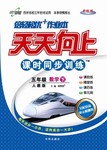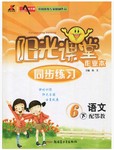题目内容
2.This brief book is aimed at high school students,but speaks to anyone learning at any stage of life.Its formal,serious style closely matches its content,a school-masterly book on schooling.The author,W.H.Armstrong,starts with the basics:reading and writing.In his opinion,reading doesn't just mean recognizing each word on the page; it means taking in the information,digesting it and incorporating it into oneself just as one digests a sandwich and makes it a part of himself.The goal is to bring the information back to life,not just to treat it as dead facts on paper from dead trees.Reading and writing cannot be completely separated from each other; in fact,the aim of reading is to express the information you have got from the text.I've seen it again and again:someone who can't express an idea after reading a text is just as ineffective as someone who hasn't read it at all.
Only a third of the book remains after that discussion,which Armstrong devotes to specific tips for studying languages,math,science and history.He generally handles these topics thoroughly (透彻地) and equally,except for some weakness in the science and math sections and a bit too much passion (激情) regarding history.Well,he was a history teacher-if conveyed only a tenth of his passion to his students,that was a hundred times more than my history teachers ever got across.To my disappointment,in this part of the book he ignores the arts.As a matter of fact,they demand all the concentration and study that math and science do,though the study differs slightly in kind.Although it's commonly believed that the arts can only be naturally acquired,actually,learning the arts is no more natural than learning French or mathematics.My other comment is that the text aged.The first edition apparently dates to the 1960s-none of the references(参考文献) seem newer than the late 1950s.As a result,the discussion misses the entire computer age.
These are small points,though,and don't affect the main discussion.I recommend it to any student and any teacher,including the self-taught student.
63.According to Armstrong,the goal of reading is toC.
A.gain knowledge and expand one's view
B.understand the meaning between the lines
C.express ideas based on what one has read
D.get information and keep it alive in memory
64.The author of the passage insists that learning the artsA.
A.requires great efforts
B.demands real passion
C.is less natural than learning maths
D.is as natural as learning a language
65.What is a shortcoming of Armstrong's work according to the author?D
A.Some ideas are slightly contradictory.
B.There is too much discussion on studying science.
C.The style is too serious.
D.It lacks new information.
66.This passage can be classified asB.
A.an advertisement B.a book review
C.a feature story D.a news report.
分析 本文叙述了作者对作家Armstrong写的作品进行的评论.作者认为Armstrong的书内容严谨,密切围绕如何学习展开的,其话题有些是关于阅读与写作.Armstrong的三分之一的作品是对学习语言,数学,科学和历史作专门的建议.作者虽然认为Armstrong的作品历史久远,缺少新的信息,但是仍然觉得非常有用,要向学生大力推荐.
解答 63.C 细节理解题.根据第二段的"the aim ofreading is to express the information you have got from the text"可知,阅读的目的是表达你从文章里获得信息,故选C.
64.A 细节理解题.根据第三段"As a matter of fact,they demand all the concentration and study that math and science do,though the study differs slightly in kind.Although it's commonly believed that the arts can only be naturally acquired,actually,learning the arts is no more natural than learning French or mathematics."可知,学习艺术是需要付出很多努力的,故选A.
65.D 细节理解题.根据第四段的"The firstedition apparently dates to the 1960s-none of the references seem newer thanthe late 1950s第一个版本显然要追溯到1960年代似乎没有比二十世纪五十年代年代末的引用更新,体现出Armstrong's work年代较久远,所以缺少新信息.故选D.
66.B 推理判断题.根据第四段的"My other commentis that the text aged"我的其他评论是文本的年龄.可判断本文中作者对Armstrong's work进行评论.Book review书评.故选B.
点评 解答细节理解题时,一个常用的方法就是运用定位法,即根据题干和选项中的关键词从原文中找到相关的句子,与选项进行比较从而确定答案;推理判断题既要求学生透过文章表面文字信息推测文章隐含意思,又要求学生对作者的态度、意图及文章细节的发展作正确的推理判断,力求从作者的角度去考虑,不要固守自己的看法或观点.

 天天向上课时同步训练系列答案
天天向上课时同步训练系列答案 阳光课堂同步练习系列答案
阳光课堂同步练习系列答案-You get well paid,as long as you do a good job,I promise you.( )
| A. | must | B. | should | C. | shall | D. | may |
| A. | establishing | B. | establish | C. | to establish | D. | established |